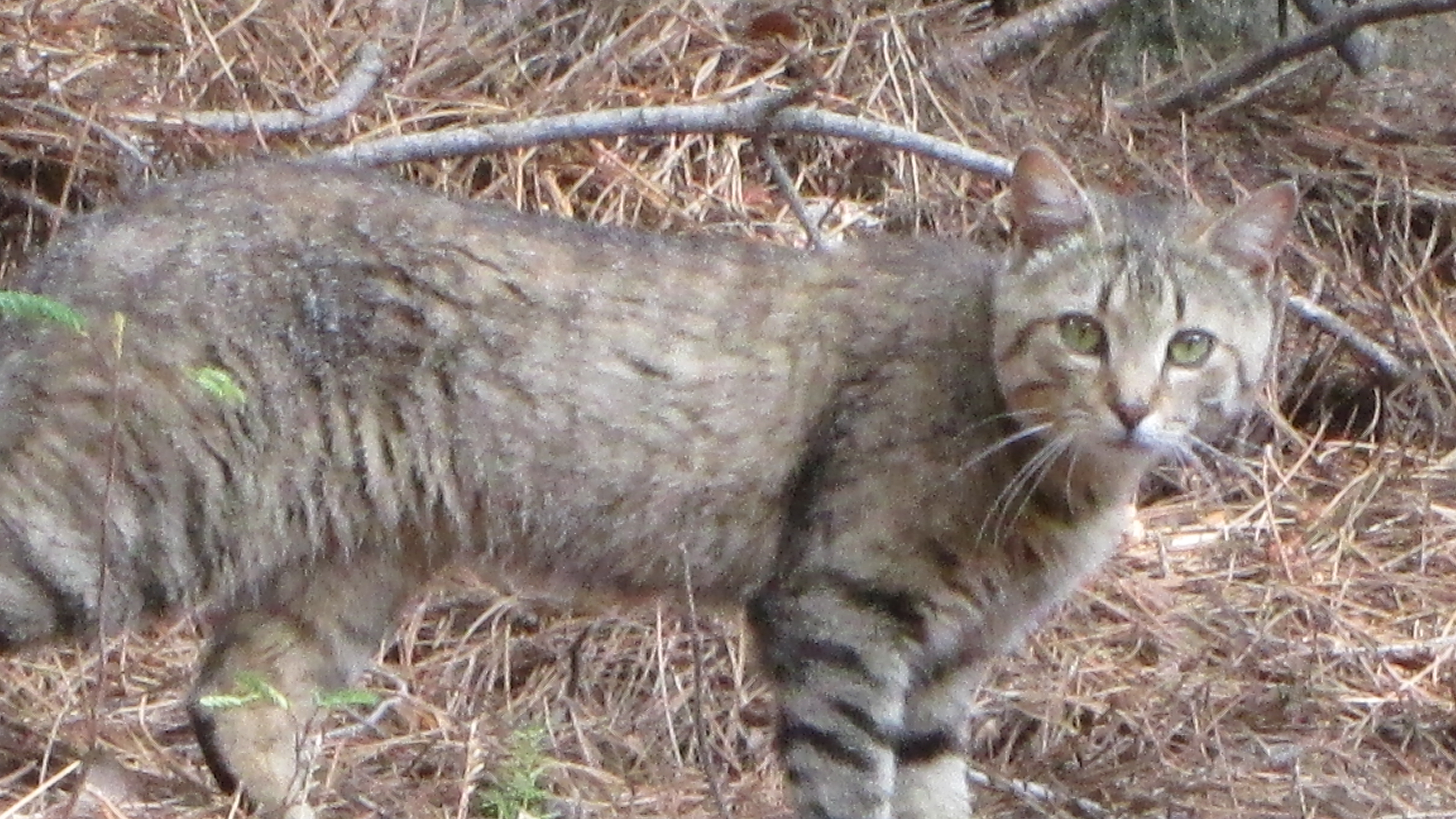Cat
An cat is an animal native to the Dunian continent that spread to near worldwide due to being a popular pet among Hauflins.
Basic Information
Anatomy
Cats are similar in anatomy to the other felid species, with a strong flexible body, quick reflexes, sharp teeth and retractable claws adapted to killing small prey.
Genetics and Reproduction
The cat has two estrus periods, one in winter and another in summer. Estrus lasts 5–9 days, with a gestation period lasting 60–68 days. During the mating season, males fight viciously, and may congregate around a single female. There are records of male and female wildcats becoming temporarily monogamous. Kittens are usually born between April and May, and up to August. Litter size ranges from 1–7 kittens.
Growth Rate & Stages
Kittens are born with closed eyes and are covered in a fuzzy coat. They weigh 65–163 g (2.3–5.7 oz) at birth. They are born with pink paw pads, which blacken at the age of three months, and blue eyes, which turn amber after five months.Their eyes open after 9–12 days, and their incisors erupt after 14–30 days. The kittens' milk teeth are replaced by their permanent dentition at the age of 160–240 days. The kittens start hunting with their mother at the age of 60 days, and start moving independently after 140–150 days. Lactation lasts 3–4 months, though the kittens eat meat as early as 1.5 months of age. Sexual maturity is attained at the age of 300 days.
The kittens are largely fully grown by 10 months, though skeletal growth continues for over 18–19 months. The family dissolves after roughly five months, and the kittens disperse to establish their own territories.
Ecology and Habitats
Feral cats can live in forests, grasslands, tundra, coastal areas, agricultural land, scrublands, urban areas, and wetlands. Their habitats include small islands with no human inhabitants. The close relatives of the domestic cat, the African wildcat and the sand cat both inhabit desert environments.
Dietary Needs and Habits
Cats are obligate carnivores: their physiology has evolved to efficiently process meat, and they have difficulty digesting plant matter. Cats primarily preys on small mammals such as rabbits, hares and rodents like dormice or birds, especially ducks and other waterfowl, pigeons and passerines.
Additional Information
Social Structure
Although cats are solitary, the social behavior of domestic cats is much more variable and ranges from widely dispersed individuals to feral cat colonies that gather around a food source, based on groups of co-operating females.
Cat communication includes the use of vocalizations including mewing, purring, trilling, hissing, growling and grunting as well as cat-specific body language. Cats also communicate by secreting and perceiving pheromones.
Domestication
Cats were never purposely domesticated, its more that they domesticated themselves.
The association of cats and sapient races appears to have developed along with the establishment of mainly Hauflin settlements, where rodents in grain stores of early farmers attracted cats. This association ultimately led to cats and hauflins co-habitating and tolerating each other, leading to no real physical difference between a wildcat and a "domestic-cat". This practice of making cats pets was adopted by a few other races in imitation of haulflins such as Amazons, and some Giants and Succubi.
Geographic Origin and Distribution
Cosmopolitan
Perception and Sensory Capabilities
Cats have excellent night vision and can see at only one-sixth the light level required for human vision. However, domestic cats have rather poor color vision and (like most nonprimate mammals) have only two types of cones, optimized for sensitivity to blue and yellowish green; they have limited ability to distinguish between red and green.
Cats have excellent hearing and can detect an extremely broad range of frequencies. They can hear higher-pitched sounds than either dogs or humans, detecting frequencies from 55 Hz to 79,000 Hz, a range of 10.5 octaves, while humans and dogs both have ranges of about 9 octaves. Cats can hear ultrasound, which is important in hunting because many species of rodents make ultrasonic calls.
Cats have an acute sense of smell, due in part to their well-developed olfactory bulb and a large surface of olfactory mucosa, about 5.8 cm2 (0.90 in2) in area, which is about twice that of humans.
Domestic and wild cats share a gene mutation that keeps their sweet taste buds from binding to sugary molecules, leaving them with no ability to taste sweetness. Their taste buds instead respond to acids, amino acids like protein, and bitter tastes.
Cat righting reflex: During a fall from a high place, a cat can reflexively twist its body and right itself using its acute sense of balance and flexibility.
Genetic Descendants
Scientific Name
Felis domesticus
Lifespan
Their maximum life span is 21 years, though they usually live up to 13–14 years.
Conservation Status
Least Concern
Average Weight
5–8 kg (11–18 lb)
Average Length
43–91 cm (17–36 in)
Body Tint, Colouring and Marking
The wildcat's fur is light sandy grey, and sometimes with a pale yellow or reddish hue, but almost whitish on the belly and on the throat. The ears have small tufts, are reddish to grey, with long light yellow hairs around the pinna. The stripes around the face are dark ochre to black: two run horizontally on the cheek from the outer corner of the eye to the jaw, a smaller one from the inner corner of the eye to the rhinarium, and four to six across the throat. Two dark rings encircle the forelegs, and hind legs are striped. A dark stripe runs along the back, the flanks are lighter. Pale vertical stripes on the sides often dissolve into spots. Its tail has two to three rings towards the end with a black tip. Its feet are dark brown to black below.




Comments